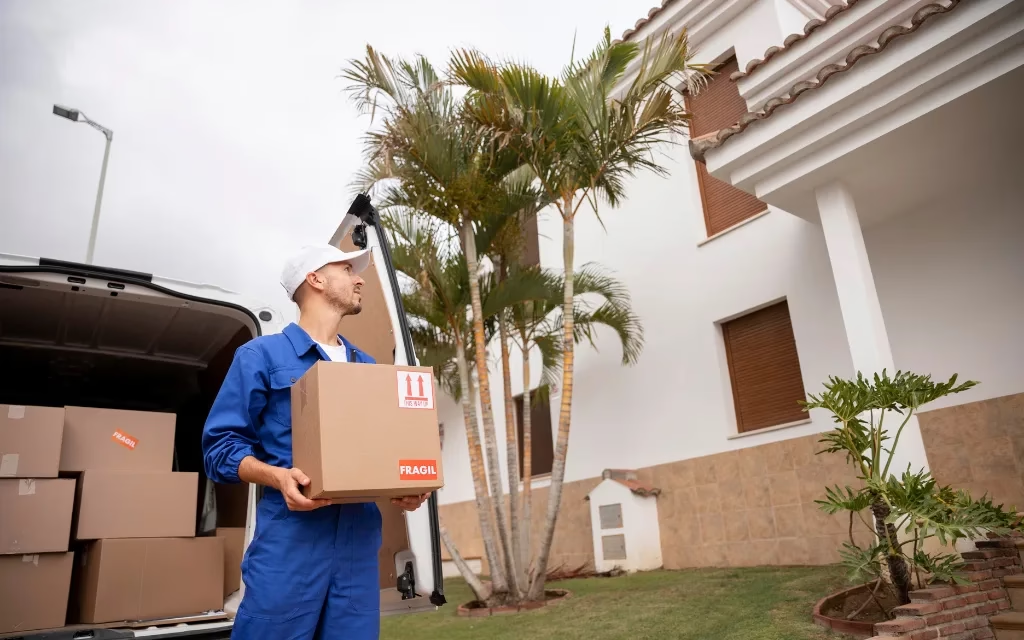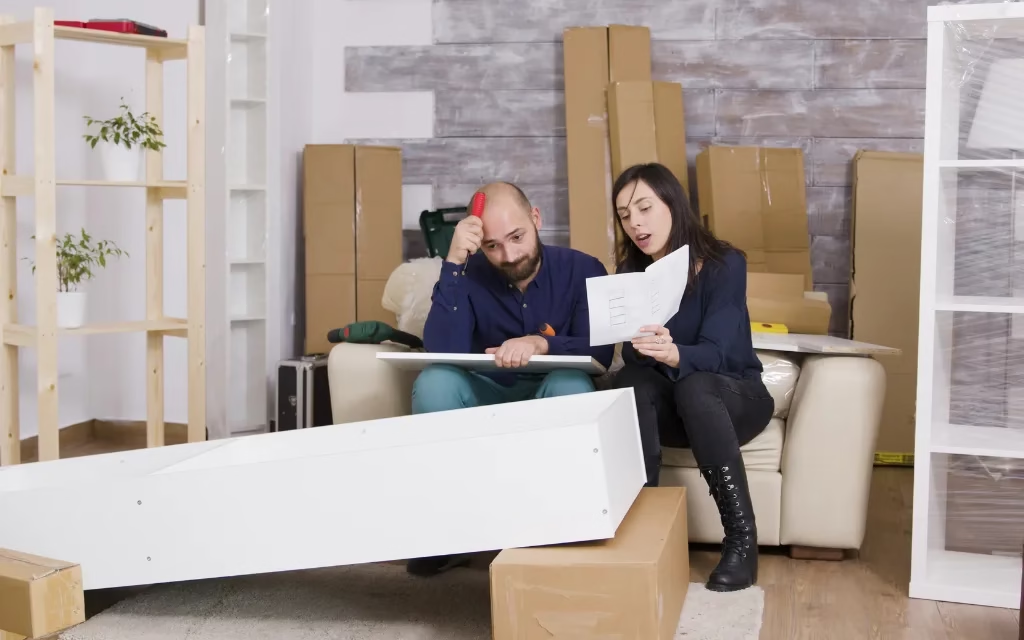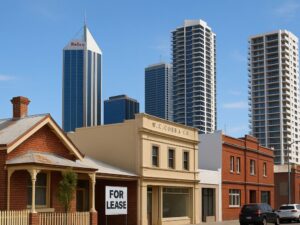It’s always exciting to move into an apartment in Australia, but if you’re not careful, it may cost a lot of money. Cost of Moving House in Australia can be very expensive or very cheap, depending on how far you have to go, how big your house is, and what services you choose.
Moving costs Australians about $3,000 on average. A basic local move can cost as little as $300, while a long-distance transfer can cost more than $10,000. These expenditures include hiring movers, buying packing goods, paying for transportation, getting insurance, setting up utilities, and sometimes even storage.
It is quite important to know these prices ahead of time. Not only can meticulous planning allow you to stay on budget, but it will also make the move lot less stressful. We’ll go over all the important costs in this article and provide you some advice on how to save money while relocating.

Cost of Moving House in Australia: Local Moves
If you don’t prepare properly, even moving inside your own hometown can add up rapidly. The size of your property, the number of things you own, and the sort of service you select largely determine how much it will cost to move in Australia.
Moving within the same city can cost between $400 and $1,200 for a small single-bedroom apartment. Homes with more than one bedroom and a lot of space may cost between $1,500 and $3,500. Most of the time, these prices include essential labor and transportation. But don’t forget about the extra charges, including packaging supplies, insurance, and cleaning.
It’s usually easier to do local moves on your own schedule, but hiring expert movers can save you a lot of time while they keep your things safe. Before you move, it’s a good idea to get rid of things you don’t need. Selling or giving away things you don’t need makes your load lighter, saves you money, and can even make you some additional cash.
Moving during days or times when fewer people are moving might also help you save money. A lot of moving firms charge higher rates on weekends or in the summer when they are busy. Being flexible can help you save money.

Cost of Moving House in Australia: Interstate Moves
Moving from one state to another is more difficult and costs more. The cost of moving house in Australia from one state to another depends on how far you have to go, how big your house is, and any extra services you might require.
Moving a one-bedroom apartment across state lines can cost between $1,200 and $2,500. Moving a larger family home can cost $4,800 up to $10,000. These expenditures include the fees for the movers, the cost of transportation, insurance, and on occasion storage.
There are a number of things that affect the cost of migrating between states. Rates are frequently higher at peak times, like summer or holidays, because of demand. Packing, taking apart furniture, or moving your car are all extra services that can cost you more.
Backloading is a way to save money by sharing truck storage space with other clients. This is frequently less expensive than renting an entire truck for the move. Getting quotes from several trustworthy moving companies is the best way to make sure you get the lowest possible price.

Hiring Professional Movers: Understanding the Costs
Hiring professional movers can be one of the most costly parts of moving house in Australia, but they make the process far smoother and less stressful. Typically, the cost for hiring experts comes to around $1,581, though this can change depending on the size of your home and any extra services you may need.
Moving companies take care of heavy lifting, moving, and sometimes even packing and unpacking. This costs you more, but it saves you time, lowers your stress, as well as lowers the chance that your things may get damaged.
Costs also depend on when you buy. Moving costs are usually higher in December and January, as these are the busiest months of the year. If you move in the middle of the week or off-season, you may conserve hundreds of dollars.
Before you hire movers, it’s really important to know exactly what’s included in their quote. Some companies might cover things like insurance, taking apart and putting your furniture back together, or even short-term storage at no extra cost. Others, however, could charge extra for these services. By checking and comparing a few quotes carefully, you can score the best deal and keep the cost of moving house in Australia under control.
Packing Supplies and Services: Budgeting for Materials
Packing supplies are essential to ensure your move goes smoothly. When you have lots of belongings, items like boxes, tape, as well as bubble wrap can quickly add up. Some people prefer to pack their own things to save money, while others hire professional packing services. Although these services come at an extra cost, they can save you a lot of time and make the moving process less stressful.
Transportation Costs: Fuel, Tolls, and Vehicle Relocation
Moving can get expensive as well as transportation is a big part of that. Gas, tolls, or even figuring out how to move your car or pets can quickly add up—especially if you’re going a long way. Planning for these costs ahead of time makes the whole move feel a lot less stressful and keeps surprises to a minimum.
Insurance Expenses for Moving: Protecting Your Belongings
Most professional movers offer basic insurance, but it may not cover all type of damages. It’s a good idea to think about getting extra insurance for valuable as well as fragile things to protect them from loss or damage.
Storage Fees: Managing Temporary Housing Gaps
If you can’t move into your new home right away, storage might be necessary. Costs depend on the size of the unit and how long you need it. Planning ahead can save you money as well as make the move less stressful.
Utility Connection Costs: Setting Up Services
When you set up everything in your new residence, you usually have to pay connection fees. These are things like gas, electricity, water, internet as well as cable bills. When you plan your move, you need to think about these costs.

Cleaning and Maintenance Charges: Leaving Your Old Home in Good Condition
It is often required, especially for rentals, that you leave your previous residence clean and in good shape. Hiring skilled cleaners or paying for small repairs can add to the cost of moving.
Property Valuation and Inspection Costs: Ensuring a Smooth Transaction
When you buy or sell a house, you need to think about the costs of getting it examined as well as checked. These things make sure that the house is in good shape and stop problems from coming up during the process.
Stamp Duty and Legal Fees: Understanding the Costs
When you buy a new house, you have to pay stamp duty as well as legal fees. The amount of these changes depending on the value of the property and the state. Talking to a lawyer can help you understand these costs and plan for them.
Renovation and Repair Expenditure: Preparing Your New Home
Sometimes your new home needs renovations or repairs. Budgeting for upgrades ensures a smooth transition as well as avoids unexpected financial strain.
Miscellaneous Expenses: Accounting for Unexpected Costs
Additional costs can include address changes, school transfers, or other unforeseen expenses. Planning for these helps you stay within budget.
Budgeting Tips for an Affordable Move
- Start Early: Plan your move in advance in order to prevent extra costs at the last minute.
- Get Quotes: Get recommendations from more than one mover to find the best deal.
- Declutter: Get rid of things you don’t need by selling or giving them away.
- Do It Yourself: Do some things yourself in order to save money.
- Move Off-Peak: Moving during the off-season or on a weekday is cheaper.
Financial Assistance and Grants
Some groups, such as soldiers, families with low incomes and workers who are moving for employment, may be able to get funding or other types of financial help. Looking into such possibilities can help lower the cost of moving house in Australia.
Conclusion
Moving house in Australia costs a lot of money, and there are a lot of costs that can add up quickly. Making arrangements ahead, knowing how much things will cost, and finding ways for saving money can help your move go more smoothly and cost less. To stay on budget and reduce stress, it’s important to plan ahead and do your research.
Frequently Asked Questions
1. How can I reduce the cost of hiring professional movers?
Compare quotes from several companies, move mid-week or off-season, and declutter beforehand.
2. Are there government schemes to help with moving costs?
Yes, grants or financial aid may be available for eligible groups like veterans or low-income families.
3. How can I minimize storage costs?
Sell or donate unneeded items to reduce storage size, and look for cost-effective storage options nearby.
4. Do I need extra insurance when moving?
It’s recommended for valuable or fragile items to protect against loss or damage.
5. What are the main things to budget for in a move?
Consider movers, packing supplies, transport, utilities, insurance, repairs, and any unexpected expenses.






